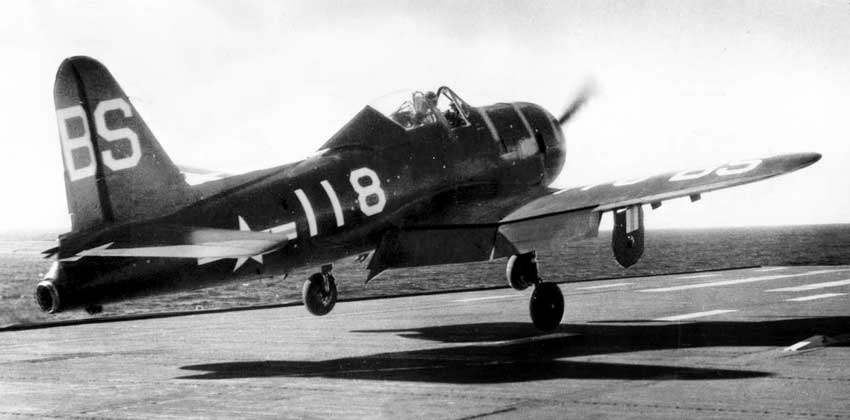

History:
The FR-1 "Fireball" was designed in early 1943 for the US Navy, from
a proposal by Admiral J McCain for a composite powered fighter in December 1942.
At the time this was seen as the way ahead for the US Navy as early the jet
engines had sluggish acceleration which required a long take off run, which
was fine on dry land, but understandably gave rise to some concern when using
aircraft from carriers. On the 1/2/1943 The Ryan Aeronautical Company was awarded
a contract for three prototypes and one static airframe for testing. The first
aircraft was ready for it's maiden flight on the 25/6/1944, however it was only
powered by it's piston engine for the first two flights with the General Electric
I-16 turbojet engine being fitted a few days later.
| The XFR-1 had excellent performance from it's first flight, with few serious problems being encountered at first. But a shadow fell over the aircraft when on the 13/10/1944 the first prototype disintegrated in midair, when in it's final phase of testing. The problem was traced to the wing rivets, this was over come by doubling the amount of rivets. But the other two prototypes also crashed in testing before they could be modified. |
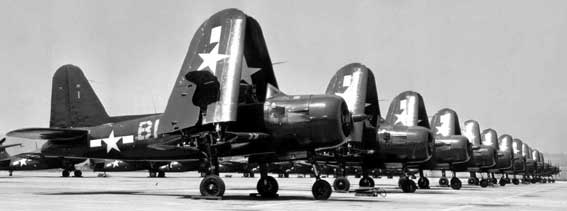 |
On the 2/12/1943 the US Navy ordered 100 FR-1" Fireballs" and later in 1944 ordered an additional 600 aircraft, but after VJ day after only 66 aircraft had been made the order was canceled. Before that and due to the urgency of the Pacific war and the planned invasion of Japan in 1946. On the 1/1/1945 a new squadron was formed VF-66 of carefully selected personnel headed by Lt.Comdr J.F. Gray, with the aim of working up the new FR-1 to operational status ASP for the fleet. Three FR-1s were hoisted aboard the carrier USS Ranger on the 1/5/1945 for tests and by July 1945 the squadron was making preparations for deployment to the Pacific combat zone, this was put on hold when on the 15/8/1945 the war ended. The Navy officially unveiled the Ryan FR-1 to the public on the 26/9/1945.
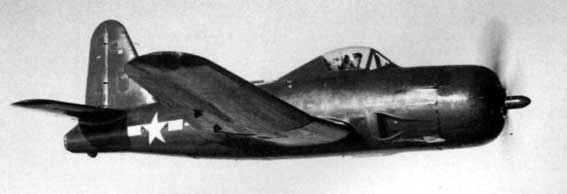
|
With the end of the war and the cancellation of the order for the FR-1, the Navy continued to test the "Fireball" and Ryan went on to improve the design with the XFR-4, this was done by fitting of a in place of the GE I-16 and reallocating the air intakes from the wing roots to the fuselage sides, just in front of the cockpit, the outcome of this was an increase of around 100 mph in the top speed, only one prototype was made and the Navy were not interested. |
|
Ryan however were not easily put off and started work on the XF2R-1 "Dark Shark" replacing the piston engine with the General Electric XT-31 turboprop engine but keeping the General Electric I-16 in the tail, this made the aircraft around 5' longer than the "Fireball", with it's new nose and increased tail surface the XF2R-1 looks very different from the FR-1, but in essence it was a modified FR-1. The XF2R-1 took to the air in November 1946, it was soon apparent that the g new turboprop engine and 8' Hamilton propellers made a huge differences in performance for carrier operations, but once again the Navy were not interested, having decided by that time that pure jet power would fulfill there needs for the late 1940's and beyond. |
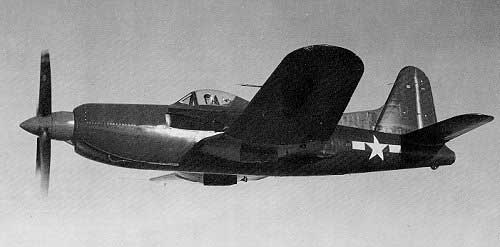 The XF2R-1"Dark Shark"
The XF2R-1"Dark Shark" |
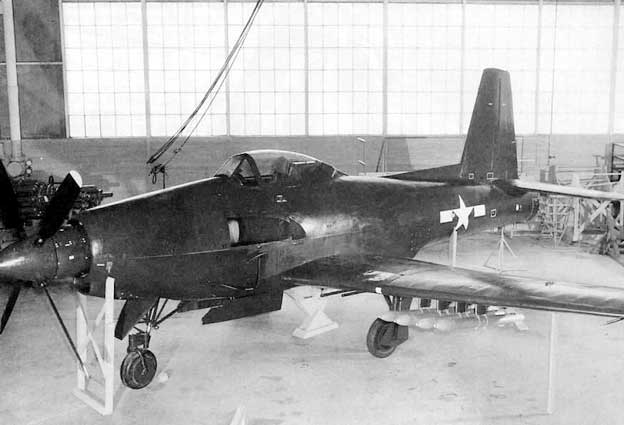
|
The USAAF were impressed by the testing of the "Darkshark" at Muroc Dry Lake air base in late 1946, seeing that it could possibly fulfill the specifications for the Convair XP-81, which was then under going evaluation testing at Muroc Dry Lake. The Army asked Ryan to build a aircraft based on the XF2R-1 but with an Westinghouse J-34 turbojet engine instead of the General Electric I-16. The aircraft Ryan designed, the XF2R-2 was a major redesign of the "Darkshark" incorporating the intakes from the XFR-4 Considered by many to be the pinnacle of the mixed-power concept, over coming all the problems with the use of two different types of engine. The XF2R-2 had long range, good performance and a large ordnance capacity it however along with the other American mixed powered aircraft such as the Convair XP-81, Grumman,s XTB3F-1 "Guardian" and the Curtiss XF-15, it would end up being an evolutionary dead end. |